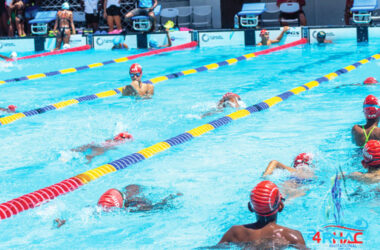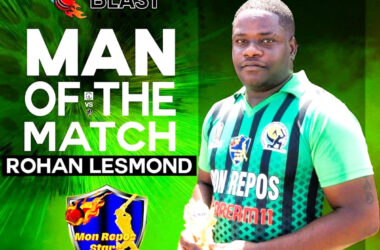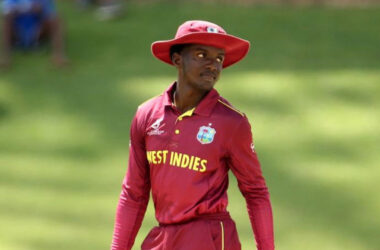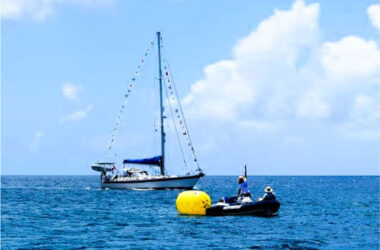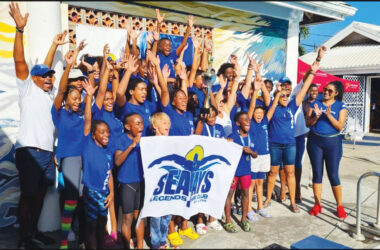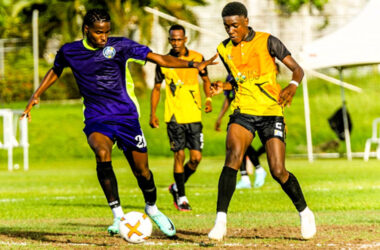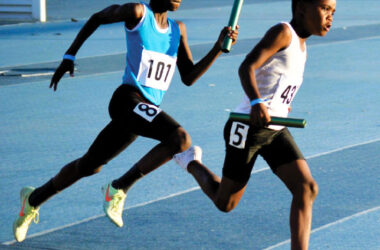One of the world’s biggest sporting kaleidoscope, the Summer Olympic Games, (Tokyo 2020, Japan) is only 117 days away and like previous games, expectations are at an all-time high in spite of the Covid-19 pandemic, which continues to play havoc globally. However, will it be the same old story which is, more athletes testing positive for banned substances.
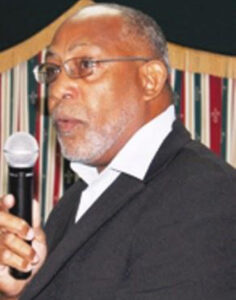
Today we feature the final part of our conversation with the former president of the Saint Lucia Boxing Association; Saint Lucia Basketball Federation and Vice President of the Saint Lucia Amateur Swimming Association (SLASA), Dr. Kenneth Louisy who also has served as Saint Lucia’s representative on the Regional Anti-Doping Organization (RADO) before stepping down after many years.
Our conversation is on the use of banned substances commonly called, Performance – Enhancing Drugs or PEDs.
What category of athletes they look out for to be tested?
“Do you remember the Junior Carifta track and field championship that was held at the George Odlum Stadium in Vieux Fort in 2009? We did doping control there. The onus is on the national sports federations to submit athletes to the national anti-doping organization (NADO) that will be involved in national, regional and international competition because they want them to be in the testing pool and can be tested at any time and that’s why they have to give their whereabouts information”.
“NADO has tested a number of junior athletes to include swimmers, table tennis players, because they represented their country, and they were put in the pool by their respective national sports federations. We don’t go out there and say who have to be in the pool, we give guidelines”.
Apart from Track and field, which other national sports federation has been tested in Saint Lucia?
Dr Louisy, “Almost all; we have tested cricketers, boxers, track and field basketballers, volleyballers, swimmers and martial arts (karate). We haven’t gotten to Bodybuilding yet because we figure to get there, we need to do some education, although it’s up to them to be aware of what is going on around them; but I believe if we are going to be testing people, we ought to give them an opportunity to understand why we are going to be testing”.
In terms of a clean slate do you re-test?
Dr Louisy: “Locally yes. We haven’t had any issues with any international athlete and hopefully we will continue to have a clean slate for as long as possible”.
He added, “You have coaches, not all, those who see potential in an athlete and want to get much more out of them do things with them they ought not to do and have them take stuff they ought not to take. Athletes have to be educated and we cannot wait until they get out there, we have to do it from here”.
How closely do the Regional Anti-Doping Agency and the World Anti-Doping Agency (WADA) work together and are there liabilities?
“Strict liability simply means, athletes are responsible for anything that they put in their bodies, knowingly or unknowingly, so if you go down to eat a steak, which has happened before, and the cow from which the steak comes was injected with testosterone and there is residual testosterone in the meat and you eat it you are liable. But it doesn’t mean that you will be sanctioned for everything that you are not liable for once there is proof”’
“This person did not really eat the meat because he knew it had testosterone, but if you buy supplements, and the supplements are tainted you are liable whether you knew or not what was in it, because you have a responsibility to check it out. If your coach gives you something and it’s a performance enhancing drug, you are responsible. The process of determining whether you will be sanctioned or not will depend on the circumstances”.
“Some of those international experience players, when they get caught it’s very difficult for them to prove that it was not done deliberately that it was an accident. A lot of them get some of the best education on anti-doping. We have done education sessions with the West Indies cricket team in Saint Lucia during the T20 World Cup and most of the develop countries do it quite often with all their respective squads. The West Indies is bombarded with information at all levels. The Olympic sports, generally speaking, tend to have more information on anti-doping than sports like baseball and American football which are not Olympic sports”.
Is there any flexibility taken into consideration the circumstances or intentions of an athlete?
“Let’s look at it this way, if an athlete does a Urine Test and it turns out positive, there is a process and during that process the athlete has an opportunity to put his case forward, sometimes the athlete come and says yes, I take full liability even without going through the case and I took this thing whatever the circumstances I took it”.
According to Dr. Louisy, “People who do that, depending on the substance, because not all substance carry the same sanction, they tend to be a little more understanding, but once you start to go through the process of what you call results management there is a committee of lawyers. RADO has a pool of lawyers who has been trained in results management of cases of people coming in with a positive test. What happens when this occurs, you give the information to the three member management committee and they will look at all the information and coming out of that, they will take the decision as to whether the person was liable or not, if the person was not liable and the person did say yes they took whatever it was but didn’t know it was tainted, and they can prove it then the sanctions would be based on that”.
He continued, “If they figure the person is not speaking the truth and all the information looks like the person deliberately did it, then the sanction will be based on that. There is also an appeals process and it goes up all the way to the international court of justice for sports”.
Any idea of the procedures involved in managing results and findings?
“There is protocol that is followed, if the results are negative, they let them know, it’s negative. If the test is positive there is a procedure that is followed. The athlete, the international association, the national federation, WADA and NADO have to be informed. Once that has taken place, the onus is either on the person who held the meet at which the athletes were tested or the organization that solicited the testing. Nobody can go out and do testing without going through the process of national organization. In Saint Lucia, the Olympic Committee is the one responsible for bringing in officers to conduct the test.”
“The athlete is asked to present his case to the management committee, management will call in the athlete either physically or otherwise for a hearing and based on the hearing a decision will be taken. That decision will be funnelled to the athlete and to the various entities that I mentioned earlier, along with the sanction. If there is no sanction there is no need to talk about it. If there is a ban for two years, one month or a lifelong ban, that will be accompanied by the decisions of the management committee”.
How does a banned substance make it on the prohibited list?
“It’s usually a very long process, but there are substances put on the prohibited list for many years and I don’t think they will come off. It’s an ongoing process. If they find athletes are whispering about a substance that is not on the list, then they will include it under the observation aspect of things, but active scientific research would be done, to find out if that substance really and truly will be something that is harmful to the athlete and more so something that is going to provide them with improved performance enhancing. WADA has a scientific committee, and they are the ones who vet products and that is how it gets to the list and get off the list. The list is published every 1st January and during the process for that year it is constantly revised for persons who have any questions or objections to anything going on the list.”
What is a designer drug?
“It’s a name that is given to a drug that is produced to have a certain type of effect on an athlete or anybody. It is a drug that is produced with a specific purpose, to either enhance performance or to enhance your look.”
What is the status on Vitamin B12 as it contains Cobalt?
“Cobalt is a trace element that is involved in the biochemical process that produces erythropoietin. Increase in bodily intake of cobalt results in increase erythropoietin production. Erythropoietin is necessary for the production of red blood cells. An increase in erythropoietin results in an increase in red blood cells.
“Red blood cells carry oxygen from the lungs to the rest of the body where it is required. Muscles are one of the tissues that uses large amounts of oxygen which is required to produce energy.
“Abnormally high numbers of red blood cells can result in heart attacks and strokes. So an increase in cobalt, if it passes a certain amount, will indirectly cause an increase in red blood cells and the dangers associated with it that is one reason it is prohibited past a certain threshold. It can therefore be used by athletes to increase oxygen to their muscles, a dangerous practice which is also a form of cheating”.


